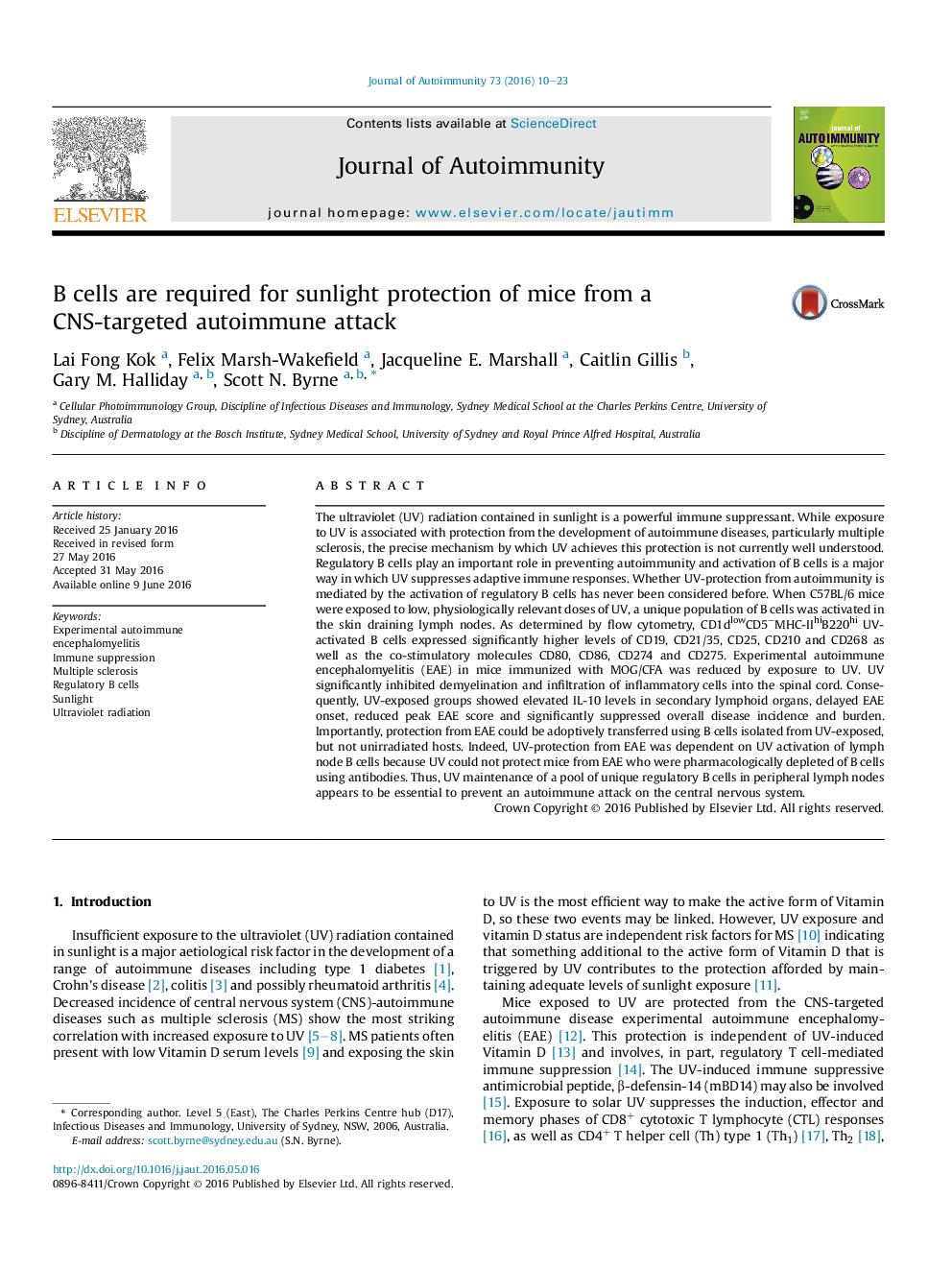| Article ID | Journal | Published Year | Pages | File Type |
|---|---|---|---|---|
| 3367634 | Journal of Autoimmunity | 2016 | 14 Pages |
•Solar UV protects from autoimmunity but the mechanism is unclear.•Immune suppressive doses of UV activate a unique subset of lymph node B cells.•UV-protection from EAE correlates with UV activation of lymph node B cells.•UV is unable to protect from EAE in the absence of B cells.•Exposure to UV is a novel way to maintain a pool of regulatory B cells.
The ultraviolet (UV) radiation contained in sunlight is a powerful immune suppressant. While exposure to UV is associated with protection from the development of autoimmune diseases, particularly multiple sclerosis, the precise mechanism by which UV achieves this protection is not currently well understood. Regulatory B cells play an important role in preventing autoimmunity and activation of B cells is a major way in which UV suppresses adaptive immune responses. Whether UV-protection from autoimmunity is mediated by the activation of regulatory B cells has never been considered before. When C57BL/6 mice were exposed to low, physiologically relevant doses of UV, a unique population of B cells was activated in the skin draining lymph nodes. As determined by flow cytometry, CD1dlowCD5–MHC-IIhiB220hi UV-activated B cells expressed significantly higher levels of CD19, CD21/35, CD25, CD210 and CD268 as well as the co-stimulatory molecules CD80, CD86, CD274 and CD275. Experimental autoimmune encephalomyelitis (EAE) in mice immunized with MOG/CFA was reduced by exposure to UV. UV significantly inhibited demyelination and infiltration of inflammatory cells into the spinal cord. Consequently, UV-exposed groups showed elevated IL-10 levels in secondary lymphoid organs, delayed EAE onset, reduced peak EAE score and significantly suppressed overall disease incidence and burden. Importantly, protection from EAE could be adoptively transferred using B cells isolated from UV-exposed, but not unirradiated hosts. Indeed, UV-protection from EAE was dependent on UV activation of lymph node B cells because UV could not protect mice from EAE who were pharmacologically depleted of B cells using antibodies. Thus, UV maintenance of a pool of unique regulatory B cells in peripheral lymph nodes appears to be essential to prevent an autoimmune attack on the central nervous system.
Graphical abstractFigure optionsDownload full-size imageDownload as PowerPoint slide
